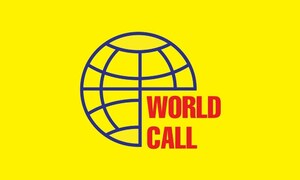HYDERABAD: Muhammad Farooq Shaikhani, President, Hyderabad Chamber of Small Traders & Small Industry (HCSTSI), lauds the federal government’s initiative in crafting a corporate farming policy aimed at advancing Pakistan’s agriculture sector, deeming it commendable.
He underscores the pressing need for the formulation of a National Seed Policy and the enactment of the Agriculture Development Authority Act to facilitate corporate farming in the country.
Highlighting the landscape of land ownership in Pakistan, Shaikhani notes that 90% of landholders possess plots ranging from 5 to 12 acres. He raises concerns regarding the absence of a statistical or systematic mechanism within the government to ascertain the eligibility of subsidy recipients under the new agriculture policy. Without robust data collection, he fears that the policy may inadvertently favor large landowners, thereby neglecting smaller cultivators and perpetuating disparities.
HCSTSI President emphasized that Pakistan’s significant agricultural potential, with 40% of its land being flat and cultivable, could effectively address the nation’s food crisis. He advocated for the adoption of international farming technologies, including researched seeds, high-quality pesticides, urea, and modern machinery, to substantially increase crop yields.
Shaikhani stressed the importance of establishing market prices for seeds, urea, pesticides and agricultural commodities, alongside providing subsidies to farmers. He highlighted the adverse impact of rising production costs and fluctuating crop prices on farmers’ livelihoods and the government’s reputation, emphasizing the need for immediate attention to mitigate these challenges.
He emphasized the necessity for a green revolution to drive agricultural development in Pakistan, advocating for strategic crop selection based on land suitability. With the ongoing decline in international wheat prices, he urged a shift towards cultivating commodities that Pakistan typically imports, such as palm oil, while also recommending a halt to sugarcane cultivation due to its high water consumption. Redirecting resources towards cultivating other valuable food crops, including cotton, was proposed as a proactive measure.
He highlighted Pakistan's position as the seventh largest agricultural nation globally, drawing attention to a Ministry of Planning and Development report revealing that approximately 24% of Pakistan’s population; accounting for 55 million individuals live below the poverty line. Additionally, he underscored that 29% of Pakistanis suffer from under-nourishment, with 40% being children. Pakistan’s human development index stands at 0.544, ranking 161 out of 192 countries, while its placement at 102 out of 126 countries in the Global Hunger Index further highlights the pressing need for policy reforms. These statistics indicate disconnect between policy formulation and the ground realities, suggesting a systemic bias favoring the country’s elite class.
HCSTSI President advocated for policies, including the Agriculture Development Policy, to be crafted and executed at the state level, emphasizing their stability and credibility even among international organizations. By decentralizing policy-making, continuity can be ensured, independent of changes in government leadership within the country.
Copyright Business Recorder, 2024























Comments
Comments are closed.